Attack of the Clones and the Romance of Power
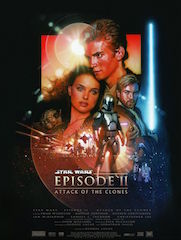 Take a poll of casual fans to the Star Wars prequel movies and you are likely to have burning hot coals heaped on the head of Lucas’ second film, Attack of the Clones. I’ve heard everything from “awful” to “insulting” to unrepeatable expletives hurled at the second movie, and it is hardly ever given praise beyond, “lightsabers are cool.”
Take a poll of casual fans to the Star Wars prequel movies and you are likely to have burning hot coals heaped on the head of Lucas’ second film, Attack of the Clones. I’ve heard everything from “awful” to “insulting” to unrepeatable expletives hurled at the second movie, and it is hardly ever given praise beyond, “lightsabers are cool.”
Even die-hard, Boba Fett pajama-wearing fans, most of the time, rank this the worst of the prequel movies. While it might pain us, like having to rank our children, one of them has to come in last. And none of that, “They’re all my favorites,” nonsense.
No, we cannot escape Episode II is the nadir of the Star Wars series and is like the uncle with irritating opinions about everything you don’t want to see around the holidays. However, like said uncle, it’s a part of the family of Star Wars movies, so you watch them, you care about what it has to say, and you somehow survive another viewing and appreciate it a little more. But not too much.
What became readily apparent as I have been continuing this series of reviews and listening more intently beyond Anakin’s pouty tantrums is how I have not appreciated how Attack of the Clones has many thematic ties to the original trilogy. Once past the screenplay issues, the lazy and sometimes terrible acting, as well as some baffling character beats, Episode II contains the chronological genesis of original trilogy themes of sacrificing for love, the folly of selfish pride, and the Force as a metaphor for power.
Of all the issues previously mentioned, the biggest and worst of the issues with Attack of the Clones is the confluence of screenplay problems, terrible acting, and confounding choices in the budding romance of Anakin Skywalker and Padmé Amidala. Hayden Christensen and Natalie Portman clearly lacked a chemistry the roguish Harrison Ford and feisty Carrie Fisher had together. The script doesn’t help them much, either. Filled with cheesy lines and fumbling interaction that feels like a roundtable reading more than an actual take, there are also the troubling and horribly miscalculated emotional beats like this one:
Anakin: “I killed them. I killed them all. They’re dead, every single one of them. And not just the men, but the women and the children, too. They’re like animals, and I slaughtered them like animals. I HATE THEM!”
Padme: “To be angry is to be human.”
Anakin: “I’m a Jedi. I can do better than this.”
I’m sorry, did Anakin kick a hole in some space drywall? Nope, he just did his best Pol Pot impression and carried out some revenge-fueled genocide on a whole village of Sand People! Never mind it being an obvious sign of emotional instability, but both of them, even the Jedi-in-training, are oblivious to this being a potential gateway to the dark side. Never mind a gateway, more like a transporter—to b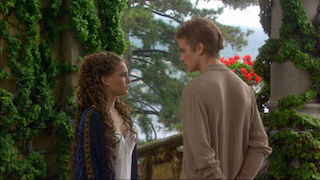 orrow from another space franchise—to the dark side.
orrow from another space franchise—to the dark side.
It’s an overwrought parallel to Anakin’s eventual son, Luke, and his trip to Bespin to rescue Han and Leia. However, when he faces down his sacrificial moment, Anakin chooses not to become a sacrifice, as Luke decided when plunging to his expected death in Cloud City, but to become the one administering sacrifice. The Force is not wielded to serve justice and compassion, but power and hatred. Anakin’s dark turn stands in contrast to the Bible’s warnings for those who take justice into their own hands:
“Do not say, “I will do to him as he has done to me; I will pay the man back for what he has done.” Proverbs 24:29 (ESV)
Padmé’s investment in their eventual relationship are never really explained, but she is clearly Anakin’s enabler and almost as responsible for his eventual turn to the dark side. Their love, backed by the incredible John Williams composition “Across the Stars”, is one birthed out of tragedy and is doomed from the start; and not just because of what we know. Padmé’s motivations to love Anakin are hardly explained beyond him being there, and there is a surprising distance given to her role, almost as if she knows what to do, but we as the audience are not privy to her inner struggles beyond her lip service to “being rational”. Her eventual assent to his endless pleads for her love set them on a collision course for the disaster that happens in Episode III.
Likewise, Anakin’s compatriots of the Jedi Council are also headed on a dangerous path. While it is not a path to the dark side, it is a journey from “guardians of peace and justice” to generals and warriors. The most ominous chord struck at the end of Attack of the Clones is not Anakin’s marriage to Padmé, which signals his breaking with being a true Jedi, but Yoda’s admonition to Obi-Wan on the battle of Geonosis.
Obi-Wan: I have to admit that without the clones, it would have not been a victory.
Yoda: Victory? Victory you say? Master Obi-Wan, not victory. The shroud of the dark side has fallen. Begun the Clone War has.
As Yoda would later say to a brash, young Luke Skywalker, “war does not make one great.” The Jedi Knights were getting away from what made them great; knowledge, defense, and compassion, to trade it in for leading the Republic’s armies in battle.
Contrast that with how Jedi approach combat in the original trilogy. Obi-Wan uses his lightsaber twice; once to defend the helpless/hapless Luke from Ponda Baba and the other only after Vader marches into battle with his lightsaber at the ready, like a true aggressive Sith. Yoda instructs Luke to not take his lightsaber into the cave of evil, only to be ignored. Luke, in contrast, is in the wrong the three times he tries to strike first; first in Cloud City against Vader and the other two on the Death Star when trying to strike down the Emperor and attacking Vader in aggressive anger. On many occasions in the prequel trilogy, however, Jedi are the first in battle and the first to ignite their lightsaber. Clearly, both Anakin, who murders innocents, and the Jedi have lost their way.
The Force is an emblem of Anakin’s lust, only satiated by whatever gains he can make to getting closer to having Padmé. It’s the allure of more recognition and of more power that will bring him closer to Palpatine and setup his fall in the third movie.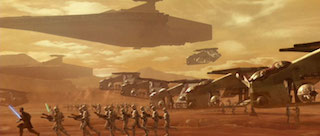
Likewise, the Jedi’s power slips as the dark side takes hold. Their vision and ability to protect is being limited by, unknown to them, Palpatine’s influence. Instead of gaining power through letting it go, they grasp at the possibility of maintaining power through military might. The only one who seems aware of the possible folly of the situation is Master Yoda, and even he is complicit as the general leading the attack on Geonosis. What we’ll see in the final installment of the prequels is a doubling-down of power’s allure and the fall of both Anakin and the Jedi, with a spark of hope.


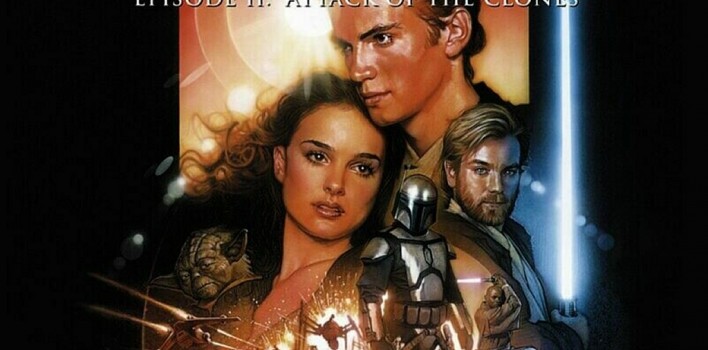
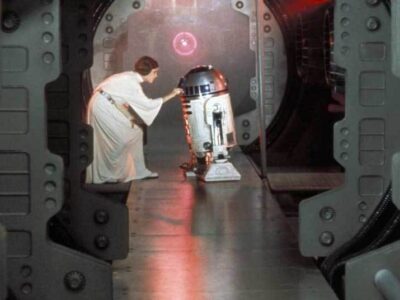
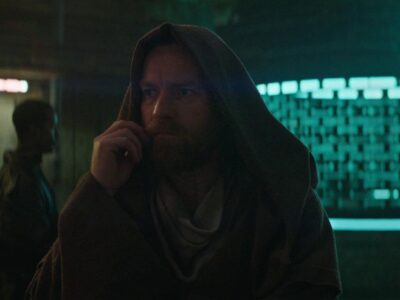
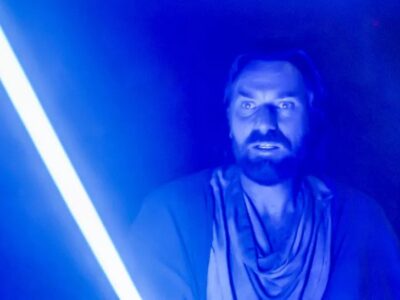


Pingback: minisode #002 – Star Wars: Episode II – Attack of the Clones | Reel World Theology